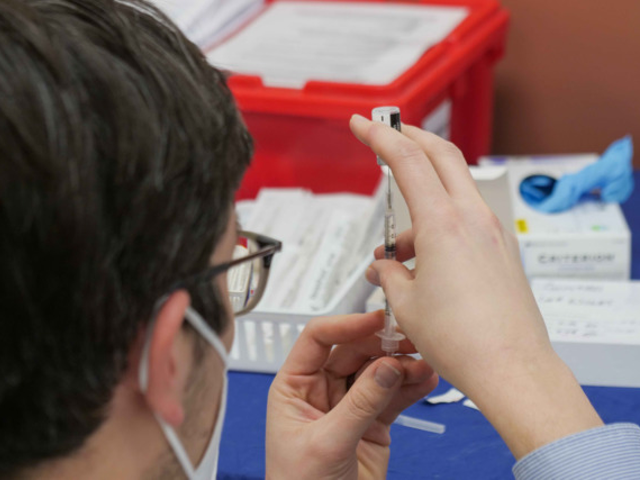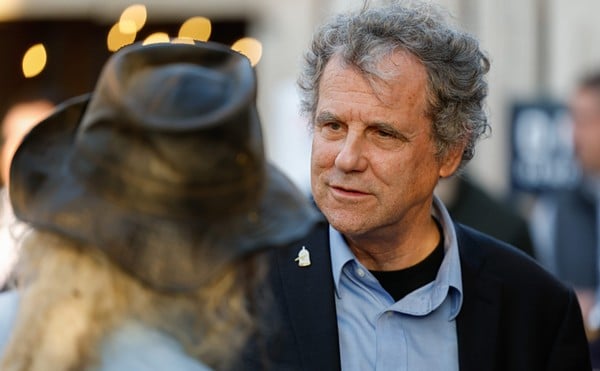If you’ve been yearning for a “pandemic party” without rebuke, it looks like you’ll finally have your moment.
In an address on Monday, Ohio Gov. Mike DeWine announced a “simplified” set of health orders for the state that includes an end to the ban on mass gatherings during the ongoing coronavirus pandemic.
But there’s still a lack of clarity around how that will look in action, even as Ohio’s COVID-19 cases are rising once again after a short lull.
Stephanie McCloud, director of the Ohio Department of Public Health, issued Ohio’s new consolidated set of orders April 5. The set rescinds outdated orders and streamlines previous and current guidance “based on what we know today,” DeWine says.
“Our understanding of this virus is much more advanced than when we first learned about it in early 2020. We now know there are a handful of key measures that will slow or prevent the spread of the virus,” McCloud says. “This new simplified order encompasses our previous orders. It streamlines those orders and underscores the most important tenets of infection prevention to stop the spread of the virus.”
Notably, Ohio no longer has restrictions on large gatherings in the new health orders. That means that festivals, graduations, proms and other congregations may occur so long as basic public health measures — masking, physical distancing, handwashing, etc. — are followed. DeWine and McCloud say that more detailed guidance is forthcoming. (According to the order, indoor facilities with fixed seating still have to operate at 25% capacity.)
“We’re going to see some of those rites of passages and those things return this year. It’s just going to be how we do it, and we do it safely,” McCloud says.
But when asked about the logistics for applying these orders to events like festivals and parades that typically are very crowded and have lines that make it difficult to physically distance from others, DeWine punted.
“I think people just need to use common sense. Again, back to the basics,” he says.
For McCloud, the emphasis is on minimizing spread. She notes that groups of 10 or fewer may gather at larger events but should maintain at least six feet of distance from other groups. This is similar to the “pod” concept that Ohio’s sports venues are using.
But while sports venues can rely upon ticketed seating to assure distance between pods, events like festivals and parades generally have no such limitations, depending instead upon individuals acting intentionally and conscientiously.
“(Distance) may be the difference between one or two cases of spread, which we hope doesn’t happen. But if it does, that’s the worst (that happens),” McCloud says.
DeWine says that Ohio still has a mask mandate but indicates that the other orders are “guidance.” He did not directly address enforcement.
Bruce Vanderhoff, chief medical officer at the Ohio Department of Public Health, urges continued caution as Ohio’s COVID-19 numbers climb back up and virus variants continue to pose problems. Michigan is dealing with a variant spike, which has spilled over the border to become a growing concern in northwest Ohio.
“Make no mistake — we are still very much in the thick of things with COVID-19. Our cases are rising again. Our testing positivity rate is back up above 4%. Our variant numbers continue to grow. And evidence continues to mount that B117 and other variants are not only much more contagious but also more deadly,” Vanderhoff says. “But this spring surge of variants is happening here in Ohio in the context of nearly 32% — or nearly 3.7 million — Ohioans having received a vaccine, and more and more people, thankfully, are rolling up their sleeves each and every day to get vaccinated.”
DeWine again emphasizes that large gatherings cannot happen without other measures to help control the virus.
“Really, back to the essential basics is what these orders are emphasizing. Above all, common sense,” DeWine says. “Wear a mask. Social distancing. Being outside is always so much better than being inside. Good handwashing. Limiting gatherings of large numbers of people who are directly with you.”
“We can do (just) about anything we want to do. It really is how we do it,” he says.
In Ohio, there have been 1,026,929 confirmed and probable COVID-19 cases and 18,646 deaths as of April 5, according to the state's coronavirus dashboard. The 21-day reported hospitalization average is 86, and the 21-day reported ICU admission average is 9.
Read the full set of new health orders.
Read the previous revised and rescinded health orders.
Watch DeWine's April 5 address.






